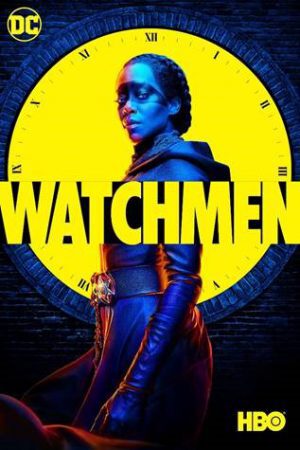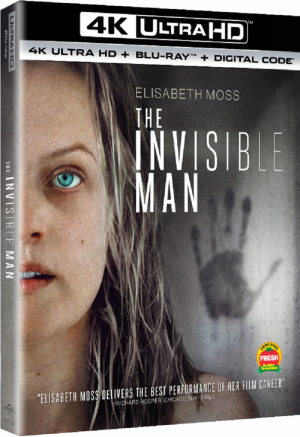REVIEW: Watchmen An HBO Limited Series
 The notion of bringing Watchmen to premium cable was an enticing one, as people anticipated a more nuanced, expansive take on the Alan Moore and Dave Gibbons maxiseries. Then, we were staggered to discover that producer Damon Lindelof intended on going forward in time and exploring what came next.
The notion of bringing Watchmen to premium cable was an enticing one, as people anticipated a more nuanced, expansive take on the Alan Moore and Dave Gibbons maxiseries. Then, we were staggered to discover that producer Damon Lindelof intended on going forward in time and exploring what came next.
With some trepidation, we watched when the series debuted last year, but our fears were quickly erased. Regina King was someone new, the world, drastically different while remaining familiar enough. And then when we see Adrian Veidt (Jeremy Irons) and later, Doctor Manhattan (Abdul-Mateen II), it felt just fine.
We open with a jarring reminder of the 1921 Tulsa, Oklahoma race riots that, just last week, is finally getting addressed with recommendations for overdue reparations to descendants. The racial tensions evident here are projected decades ahead, to a time after Ozymandias failed to scare the world straight as seen in the climax of the graphic novel.
Throughout the nine episodes comprising the sole season of the show, out now on Blu-ray from Warner Home Entertainment, we bounce around time and space, telling multiple stories, all exploring themes of isolation, power, and redemption. Lindelof and director Nicole Kassell give us a nuanced, textured production that is as thought-provoking as it is entertaining.
While the graphic novel was intended as Moore’s last word on super-heroes, a meditation on how a world would really work with super-powered folk walking the streets, here, Lindelof explores what comes next, how masked vigilantes were banned, and the police gained even more authority over daily lives. How does one serve and protect in a post-super-hero world? First, to protect their identities from the chance of reprisal, the cops now wear masks.
Our titular character is Angela Abar (King), dressed all in black and kicking ass as Sister Night. She and her fellow Tulsa officers, including the wonderful Looking Glass (Tim Blake Nelson), are now engaged in battle with the white supremacist Seventh Kavalry, improbably inspired by Rorschach, which goes to show that even in our fantasy fiction, things rarely seem to change.
 In time, we come to understand that the original Hooded Justice (Jovan Adepo) was among the first to experience the racial violence of the day. As an aged figure (Louis Gossett Jr.) he provides a link to the original costumed champions that arguably began a cycle still being played out.
In time, we come to understand that the original Hooded Justice (Jovan Adepo) was among the first to experience the racial violence of the day. As an aged figure (Louis Gossett Jr.) he provides a link to the original costumed champions that arguably began a cycle still being played out.
This is a world where Vietnam, not Washington D.C. or Puerto Rico became the 51st state and a reality where Robert Redford has served as President since the 1970s. When the violence gets out of hand, Washington sends in Laurie Blake, the former second Silk Spectre, played well by Jean Smart.
Meantime, the isolated/imprisoned Ozymandias is scheming. His threat simmers throughout the series. On the other hand, when we bring Doctor Manhattan back to Earth, his role feels disproportionate to his powers, accepting things as inevitable as opposed to knowing the odds and refusing to change them. His love for Angela is tender and provides the series with some heart and soul.
 Much as Lindelof wonderfully pulled off on Lost, here, he devotes entire episodes to single characters without interrupting the overall flow of the story. Our understanding of them enriches the overall experience.
Much as Lindelof wonderfully pulled off on Lost, here, he devotes entire episodes to single characters without interrupting the overall flow of the story. Our understanding of them enriches the overall experience.
The occasional squid rain is a lovely callback to the source material. This raises the question of how comprehensible is this show if you have not read the original graphic novel or watched Zack Snyder’s mostly successful film adaptation. I would say it works well enough that the series stands on its own but is better for having known what came before.
The episodes look fine in the 1080p transfer, retaining clarity of color and sharpness in the dark shadows of night where a lot of the action occurs. The lossless DTS-HD 5.1 Dolby Digital audio track is up to the task of hearing the whispers and rustle of capes.
All the HBO special features are ported over to the disc including two new ones: Immortal Vigilante – Hooded Justice and Adrian Veidt: The Colossal King. The others include Watchmen: Unmasked, 2019 New York Comic Con Watchmen: Masked and Dangerous, Watchmen S1: Trailer, Character Trailers: Sister Night, Blond Man and Looking Glass, Becoming Sister Night, Notes from the Watchmen graphic novel artist Dave Gibbons, Rorschach featurette, Watchmen: Alternate History, It’s Raining Squids, Squid Shelter with Tim Blake Nelson, Andrij Parekh on Directing, Sadiqua Bynum runs, jumps and falls for Sister Night, Anatomy of a Fight Scene, and Glimpses – The Visual Effects of Watchmen.































